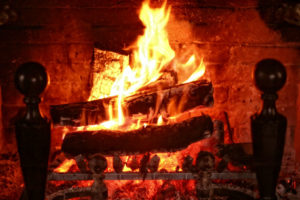 If you have been using your fireplace for several years without incidents or problems, it can be easy to believe you are an expert. However, there are a number of burning mistakes that many homeowners are guilty of. Below are just a few of the most common burning mistakes.
If you have been using your fireplace for several years without incidents or problems, it can be easy to believe you are an expert. However, there are a number of burning mistakes that many homeowners are guilty of. Below are just a few of the most common burning mistakes.
Using the wrong firewood
Wood burning fireplaces burn best when using seasoned hardwoods. Wood that has been cut, stacked, and allowed to naturally dry has a lower moisture content, creating fires that produce less smoke, burn hotter, and leave less creosote in the flue.
Improperly storing ashes
Correct burning practices don’t end when the fire goes out; how you remove and store your ashes are also an important part of proper fireplace use. Fires should be allowed to naturally extinguish, spreading or moving the ashes periodically to prevent coals or embers from lying dormant in pockets of ash. Ashes should be removed and placed in a dedicated, metal ash container that has a lid, handle for carrying, and does not directly sit on the ground. Ashes should never be dumped into trash cans or dumpsters; ask your local trash service how to properly dispose of cool ashes in your area.
Not warming the flue
Taking a few minutes to warm the flue can reduce draft issues, especially when the temperatures outside are drastically colder than those inside the house. To warm the flue, hold a small, lit bundle of newspaper under the open damper for several minutes before igniting the main fire. Doing this warms the air in the flue and helps prevent downdrafts when the hot air from the fire begins moving up the chimney.
Burning other materials
The holidays bring plenty of excess wrapping paper, cardboard, Styrofoam, and other packing materials. While it may be tempting to burn these in your fireplace, it is not recommended; whether it is wood, gas, coal, pellets, or another fuel source, your fireplace was only built to burn one thing. In addition to releasing toxic chemicals into the air, they often burn uncontrollably and can damage your fireplace and chimney. This also includes burning pre-treated, painted, or stained wood.
Not testing smoke detectors
Smoke and carbon monoxide detectors are more than just annoying alarms whose batteries seem to run out at inopportune times. These lifesaving alarms can protect you and your family in the event of an accidental fire or leak of deadly carbon monoxide gas. Smoke and carbon monoxide detectors should be placed on every floor of the house, including near any fuel burning appliances and outside sleeping areas. Test alarms every six months and replace them every 8-10 years to ensure they continue to meet current safety and technology standards.
Avoiding chimney sweepings
Whether you use your fireplace every day during the winter or a few times during the year, it still needs to be swept and inspected at least once per year. Doing this ensures that all fireplace and chimney components are undamaged, in good condition, and safe to use.
While we may try to use our fireplaces the right way, these common burning mistakes can impact fireplace safety and performance. For more information on safe fireplace burning practices or to schedule your next chimney sweeping or inspection, contact Jack Pixley Sweeps today.
